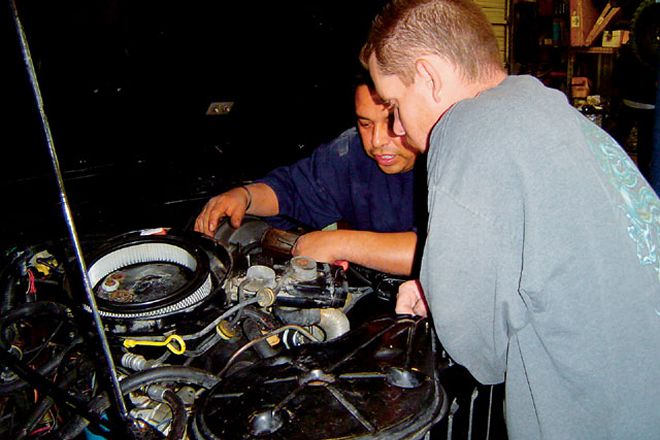
This is not a story about how to build an engine. This is not entirely a story about which parts you need for performance. This is a story about how people have screwed up both of those things. Now you won't
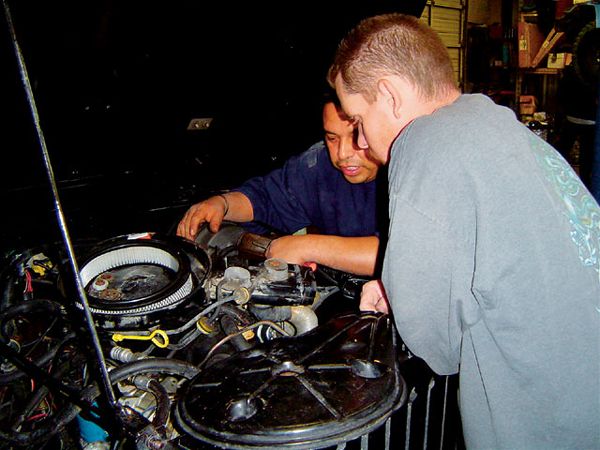
Problem: Forgetting How You Use Your Truck
Building the engine the way you think it's supposed to be built instead of for how it will be used is the most common problem. The main errors are made when choosing camshafts (too big) and compression (too much). For rockcrawling and slower-speed action, you'll need off-idle driveability and low-grunt torque, so you don't want to choose a cam that's going to make power from 4,000 to 6,500 rpm. But with mud-bogging, performance can be modeled more closely after a drag-race engine-camshaft and compression ratio that will make power in the higher rpm range since you'll need extreme torque and power to keep the wheel speed up.
Problem: Improper Ignition System Tuning
Engines built with small cams for four-wheeling will need attention paid to the base and total ignition timing because of higher dynamic compression ratios that can lead to easy detonation. It's good to be within 8 to 10 degrees of base timing and around 34 to 36 degrees of total timing (varies among engines). To get the maximum power without detonation, advance the timing 2 degrees at a time until detonation, then back it off and test the mill for no detonation.
Problem: The Unknown of a Used Engine
A couple things here: The guy may have told you it's a 406 small-block Chevy but in reality it may be a 350. In fact, you may not be certain about any of its history or life's experiences. Therefore, before you start throwing parts at it, take it to a machine shop or use a dial-bore gauge to measure the cylinder bores. You don't want to find out you bought 0.030-over pistons but the cylinders won't clean up until 0.040 over. Another reason inspection is key? If it's indeed a 350 and you bought parts for a 406, the crankshaft stroke and main bearings are among the parts that won't match. Also, people often think if a block is good, so is everything else, but until you do compression and leakdown tests and tear it apart, you can't know whether bores are too tapered, guides are worn out, valves are tired, the thread holes are bad, and so on.
Problem: Forgetting Carburetion
Rockcrawling puts your truck at some crazy angles; standard carburetors aren't always prepared for this. Choose one meant for off-road use to stop the fuel bowl from dumping over, such as a Quadrajet or Holley Avenger.
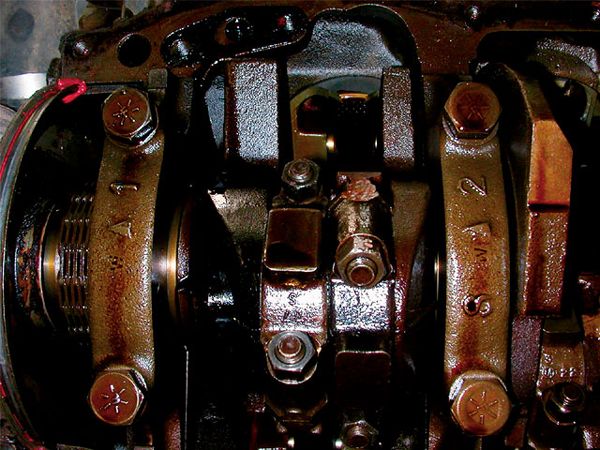
Problem: Mixing Up Connecting Rods And Caps
You remove the nuts, take off the cap, pull the piston out of the engine, set the cap on the bench. You repeat this for each piston. Then it's time to reassemble-and you start mixing up caps and rods because they're not marked. Problem is, the rods are bored to a matching cap, so when you put the No. 2 cap on the No. 1 rod and install them, you might end up losing the rod bearing since clearances will be off. The main caps that hold the crankshaft require order as well and probably are labeled from the factory. But if the rods and caps aren't marked, go ahead and add a No. 1 and so on to each companion piece as you remove them.
Problem: Pistons In The Wrong Direction
There's an arrow that faces toward the front of the engine. When you install the piston on the rod, make sure the arrow goes forward.
Problem: Buying The Wrong Camshaft
As we said, people tend to go overboard and get a camshaft that's too big, with too much lift and duration. Tightening up the duration to about 206 to 220 degrees at 0.0050-over, lift range of 0.450- to 0.500-inch, and 110-114 degrees of lobe separation angle tend to be safe choices. In a nutshell, an RV-style cam-low rpm, high torque-should be sufficient.
Problem: Installing The Camshaft
Some builders seem allergic to lining up the dots properly. By clocking the cam too far off you risk the intake valves touching the pistons and bending the valves when you fire up the engine. Translation: $$$. Also, be gentle with the camshaft during installation so you don't scratch the bearing surfaces or lobes. Use every bit of lube that comes with the cam kit and coat every lobe.
Problem: Not Having The Right Tools
When building your engine, make sure that in addition to regular handtools you also have a torque wrench. If you can afford it (or even better, can borrow), also have a crankshaft-turner tool. And ring compressor sleeves are pretty handy and fairly inexpensive. They'll make dropping in the piston much easier. Have a torque wrench that's the click type, not the pointer style, which is less accurate. P.S. Don't use an air tool to tighten spark plugs.
Problem: Not Finishing The Job
Make sure you finish a task in its entirety. In other words, we've seen and heard about it before: people getting sidetracked in the middle of torquing rod bolts, and one gets overlooked. And before you start the engine, pre-oil it. You'll need to turn it with either an electric drill or tool that can run oil through all the rockers to get everything lubricated before you start the engine.
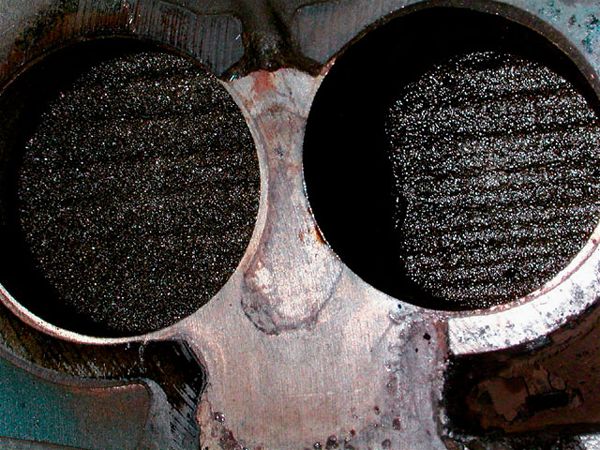
Problem: Buying The Wrong Type Of Intake Manifold
Single-plane manifolds are usually designed for midrange and top-end intake-good for racing. But when you're talking about chugging along on rocks, you'll want a low-rise dual plane to keep the low-end torque just above idle. We've seen people install a manifold that starts at 3,000 rpm; pick one that's right off idle or as close as you can get.
Problem: Not Inspecting Cylinder Heads (And Bolt Holes)
Make sure deck surfaces on the block are correct, and that all the bolt holes are cleaned where the bolts screw in because you don't want there to be any kind of resistance against the bolt, which will affect torque you're putting on that head bolt. When people haven't torqued enough, we've seen water leaking up the head bolts or head-gasket problems.
Problem: Timing Gear
Make sure the chain isn't worn out. If you put in a new camshaft with a crappy timing chain, the cam timing will change dramatically. In the bad way. And when you pull the timing-chain cover off, make sure the timing marks/dots are lined up, which is a good indication that the engine is at TDC; ensure they're still that way when you reinstall. And grease it first.
Problem: Not Checking Clearances
Check oil clearance between the main bearings and the rod bearings. You want to keep it in the 0.002- to 0.003-inch range for most engines. Too tight and you risk spinning a rod bearing. If you can afford a dial-bore gauge, then we're moving in with you. If you can't, you can use Plastigauge. Not a perfect instrument for the job, but it will still give you a good idea of how much clearance there is.
Problem: You're Messy
Treat the engine compartment like a sterile environment. When people put things back together, we've seen a lot of sloppiness. Wipe out the cylinder walls so they're not gritty to ensure that the ring will last longer. Make sure the bores, pistons, and block are all clean, and use a solvent cleaner on the cylinders. Check that the oil galleys have no debris.
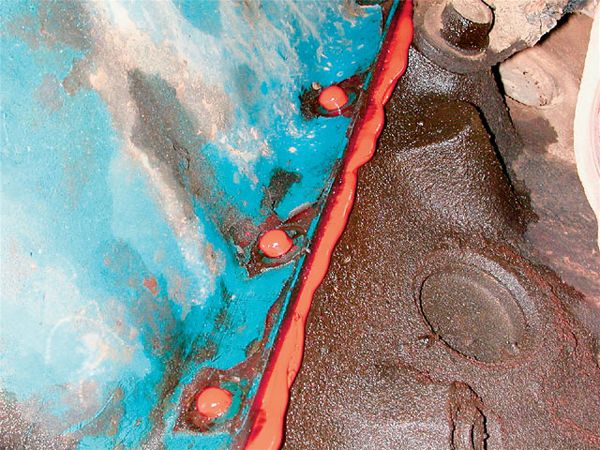
Problem: Too Much Silicone
With silicone, a little bit goes a long way. If you squeeze out a blob, part of it could break off into the motor and plug up the oil pump or oil passages.
Problem: Using Sandpaper
This happens a lot-today's bearings can't have any dust on them. If you use sandpaper or a small disc grinder on the manifold surface, that little bit of aluminum-oxide dust can wipe out a bearing. Hand-scrape and be careful about it.